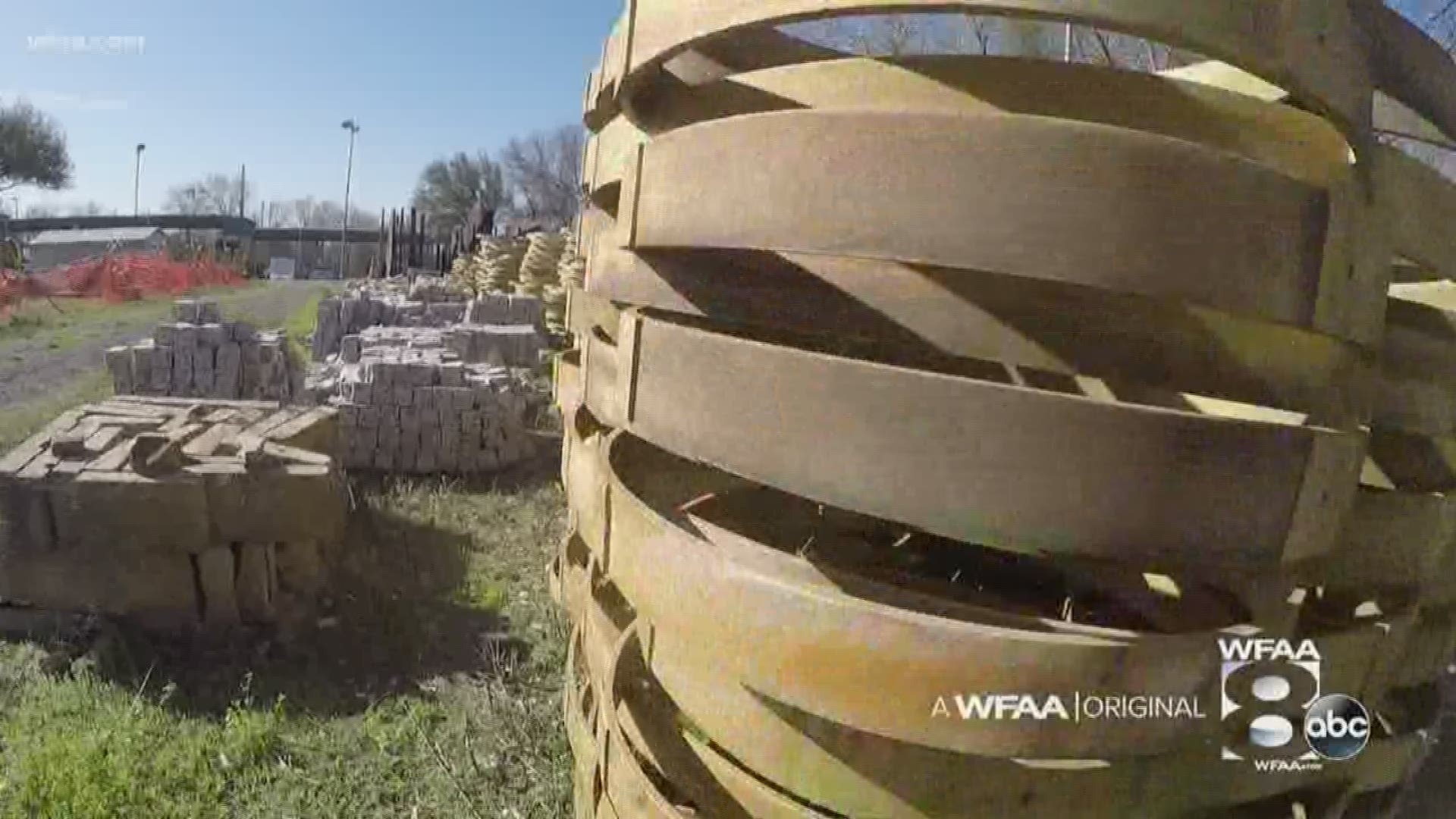DALLAS -- If you spend just a few minutes with Dallas Park and Recreation Department Director Willis Winters and listen to him describe, in intricate detail, his collection of cornerstones, coping stones, and cartouches, you'd be forgiven if you briefly considered him somewhat of a hoarder.
"Certainly after touring this site, you're probably thinking that," he joked while standing in the middle of the architectural boneyard or "Area 51" as it's sometimes called. "There are hoarding characteristics going on here."
But it's hoarding, for a very good reason. "I consider these historical artifacts," he said.
His yard full of artifacts, in storage at the Dallas Park and Recreation Department maintenance yard on the east side of the city, comes from old downtown Dallas. He has helped saved hundreds of architecturally significant pieces of the turn of the century buildings before they fell to progress or the wrecking ball.
"There's a lot of private buildings that were taken down, especially downtown, over the years that everything was lost."
For example, when buildings were torn down to make room for Main Street Garden Park, the Parks director made sure some of those old artifacts were saved.
You'll find some of the pieces of those buildings as part of the landscaping in the park's northeast corner.
The sign from the old Gold Ring Garage found a new home at the corner of Commerce and Harwood. And the rest of the limestone, terra cotta, and marble pieces of old Dallas that cover a nearly football-sized field, he wants to find a new home for them too.
"There aren't very many of those buildings left. So this is it," he said.
Like the 3-story tall Indiana limestone carving of the six flags over Texas that used to be at the front of the Titche and Goettinger Department store -- every ton of it is here waiting for a new home.
The InfoMart at Oak Lawn and the Stemmons freeway used to be home to Cobb Stadium, a poured concrete structure.
For decades fans were greeted by three-foot tall cast-concrete images of athletes: baseball players, basketball players, track and field athletes. Before the stadium was torn down, workers carefully chiseled out the artwork and moved them to Willis Winters storage yard.
The original fish fountain from the Women's Museum at Fair Park is here in storage in case they need to make a carbon copy of it again. The one currently on display at Fair Park is a replica made from the old crumbling original.
The gold-plated eagle that towers over the Cotton Bowl isn't the original either. It's here in storage too.
"The eagle was just an unrecognizable blob of concrete because it had been hit by lighting so many times," Winters said. Artisans recreated the current eagle on top of the tower based on the remnants of the original.
And then the last remaining Cotton Bowl stadium seats, from when the Dallas Cowboys were just an upstart franchise trying to win their first games, sit in the boneyard too.
"You just never know when you might have the opportunity to use these again somewhere," Winters said. "It's not even conceivable to me that we would discard anything like this. So it will be here until we find a use for it."
And that's the goal: save as many artifacts as they can, find a new use for them, maybe as art in a city park.
"So that Dallas citizens and visitors can see these pieces, touch them and understand the history, and I'll call it the lost legacy of the buildings downtown. I'm not interested in just holding stuff here forever. There's ultimate goal is to re-use it," he said.
A very serious game for a trained architect, saving every old stone he can.
"And if there's anybody tearing a building down and has a beautiful piece and needs a place to hold it, hold it, store it for future use, I'm their guy," he said.
A guy, on a mission, to save old Dallas one piece at a time.

